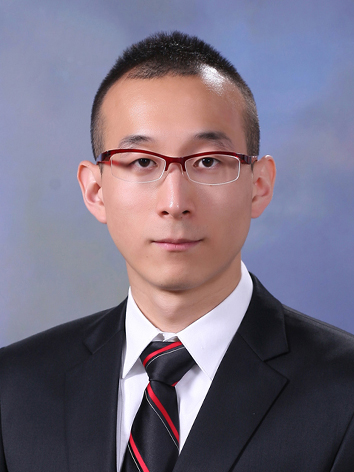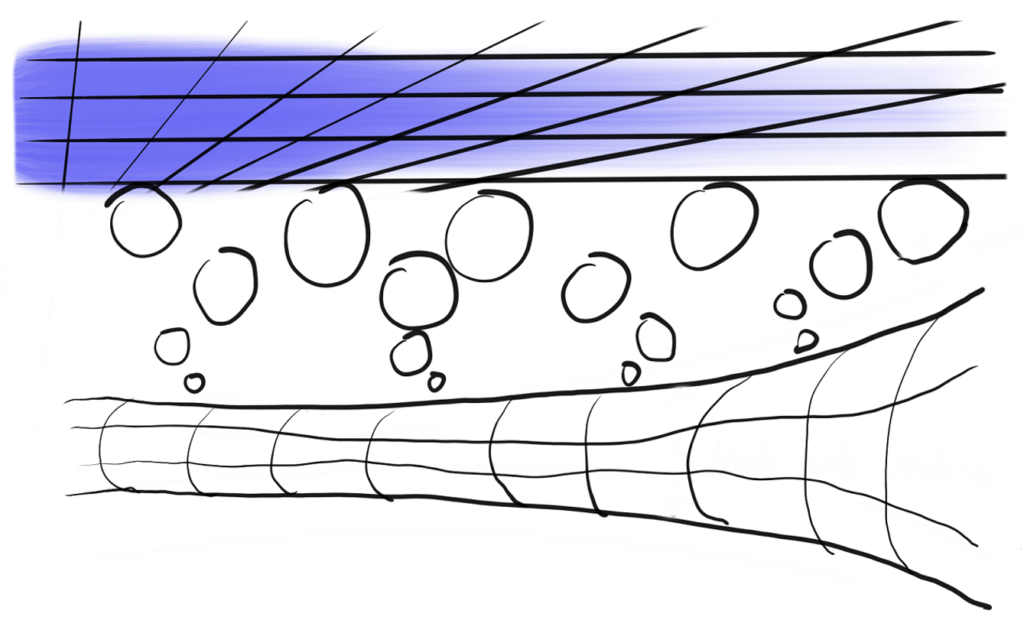
Professor Matteo Baggioli (STJU and WQC) summarizes the recent breakthroughs in the search of topological defects in amorphous materials in a News and Views commentary for Nature Communications.

Professor Matteo Baggioli (STJU and WQC) summarizes the recent breakthroughs in the search of topological defects in amorphous materials in a News and Views commentary for Nature Communications.


Sha and Xue joined our research team, welcome to the group!!!
Kyoung-Bum will join our group from September 2023 as a postdoctoral fellow. Welcome to the group!!


The holographic duality, “holography” in short, is a powerful theoretical tool discovered in the context of string theory 25 years ago. In its bottom-up formulation, holography is a duality between weakly coupled classical gravitational theories in d+1 dimensions and strongly coupled large N field theories in d dimensions which opens a new window towards a nonperturbative formulation of quantum gravity but also provides an effective method to describe quantum field theory at strong coupling. Nowadays holography has become an important complementary and highly interdisciplinary technique used in many research fields including condensed matter, hydrodynamics, quantum information, out-of-equilibrium physics, QCD and many more.
In the context of condensed matter, important new developments in the recent years have been related to the introduction of translational symmetry breaking in the dual field theory in all its forms. This is a fundamental ingredient to describe condensed matter phases and their transport properties and it was strongly motivated by unsolved questions in the realm of high-Tc superconductors and strange metallic behavior. Importantly, these new discoveries have brought an enormous impact into our modern understanding of viscoelasticity and effective theory description of dissipative systems with broken translations. The holographic methods have not only revealed several missing pieces in the hydrodynamic and effective field theory formulations but also brought to light novel universal relations regarding the physics of pseudo-goldstone modes which have been later confirmed and explained with more standard field theory computations.
Professor Matteo Baggioli from Shanghai Jiao Tong University and professor Blaise Gouteraux from École Polytechnique Paris have reviewed these exciting findings and discussed the main research directions and open questions for the future in a recent Colloquium which has been published in Review of Modern Physics, the most renowned review journal in physics.
Reference. M.Baggioli and B.Gouteraux, “Colloquium: Hydrodynamics and holography of charge density wave phases”, Review of Modern Physics

Mandy and Youbin are joining our research group as administrative assistants. We are happy to have them on board and we thank them for their support.




Sebastian Grieninger from IFT Madrid will give a set of 5 lectures about spectral methods in numerical relativity the week between Monday 25th of July and Friday 30th of July. The lectures will take place each day online (link will be shared beforehand) at 3 pm China time, they will be focused on the usage of spectral methods for applications of Holography and they will include explicit tutorials and examples.
Can fluids far from equilibrium display universal behaviors? Black holes may know the answer

Far from equilibrium systems display a plethora of interesting and new phenomena which are relevant for a diverse collection of research areas from ultra-cold gases to heavy ion collisions and quenched systems in material science and which can be directly tested in table-top experiments. Can fluids driven far from equilibrium display any degree of universality?
Recent findings by researchers from the Institute of Theoretical Physics (ITP) of the Chinese Academy of Sciences (CAS) and Shanghai Jiao Tong University (SJTU) have found that the answer might be “yes”. The study was published in PRL on the 27th of July (PhysRevLett.129.011602).
The dynamics of fluids near equilibrium can be well described by hydrodynamics whose history goes back more than 2000 years with the work On Floating Bodies by Archimedes. More recently, scientists discovered that strongly coupled fluids display very universal properties, the most famous of which is a universal minimum in the ratio between their shear viscosity and their entropy density given in terms of a few fundamental constants such as the speed of light and the Planck constant and known as the Kovtun-Son-Starinets (KSS) bound. Interestingly, this bound has been formally derived using the holographic duality, a powerful theoretical framework that is able to map commonly intractable problems, such as the shear dynamics of strongly coupled fluids, to simpler problems related to the dynamics of certain gravitational black holes.
Using precise numerical simulations for the time dependent dynamics of higher dimensional black holes driven far from equilibrium by external shear deformations, this recent work suggests that this universality could survive even far away from equilibrium, providing another case in favor of “the unreasonable effectiveness” of hydrodynamics beyond its naïve regime of applicability. The results of this study show that the viscosity-entropy ratio of strongly coupled fluids attains a constant value even when the system is driven far away from equilibrium by a time dependent external source. This outcome is completely independent of the form of the driving and holds even in the absence of conformal symmetry. Moreover, whenever the shear rate is small compared to the characteristic energy scale, this late time value corresponds exactly with that given by near-equilibrium hydrodynamics, suggesting the existence of an out-of-equilibrium attractor. On the contrary, when the late time state is kept far from equilibrium by a large shear rate (in energy units), this constant value can be parametrically smaller than the aforementioned near-equilibrium KSS value and novel phenomena appear. This research indicates the existence of universal mechanisms in the out-of-equilibrium behavior of strongly coupled fluids which might have important consequences on the dynamics of several systems such as quark-gluon plasma and complex fluids in general and which can be potentially tested in the lab in the near future.

Our team found that the low-frequency scaling of the VDOS of nanoconfined solid systems goes faster than Debye law !!!
Check it out: The ω3 scaling of the vibrational density of states in quasi-2D nanoconfined solids | Nature Communications

Our work on nonlinear elasticity, yielding and entropy in amorphous solids has been recently published in Science Advances. It was a great collaboration between Shanghai and Beijing and between high-energy physicists and soft-matter physicists. For a brief press release see here. Congratulations to all the members of the collaboration!!
An article about our paper has also appeared in Phys.org